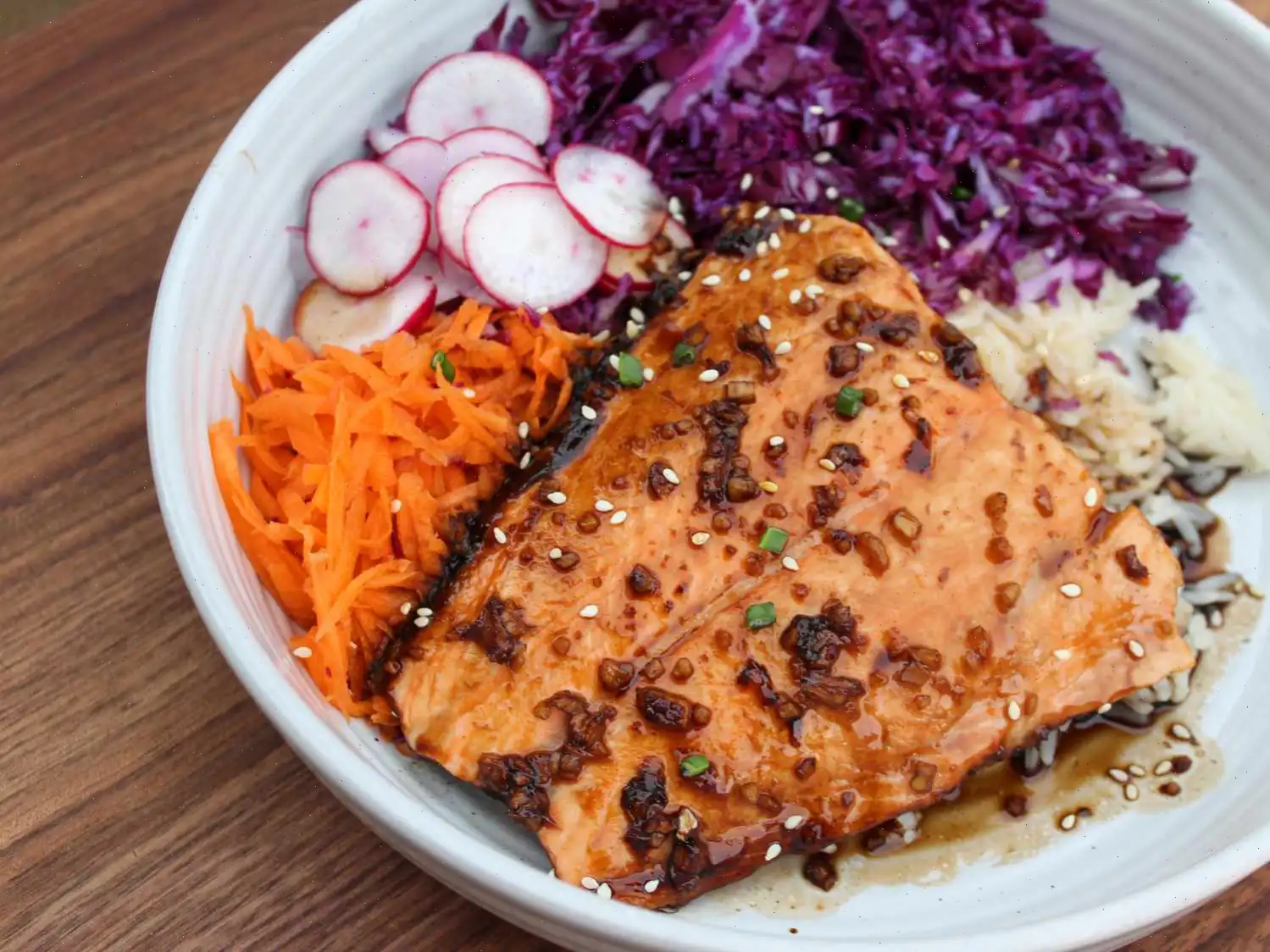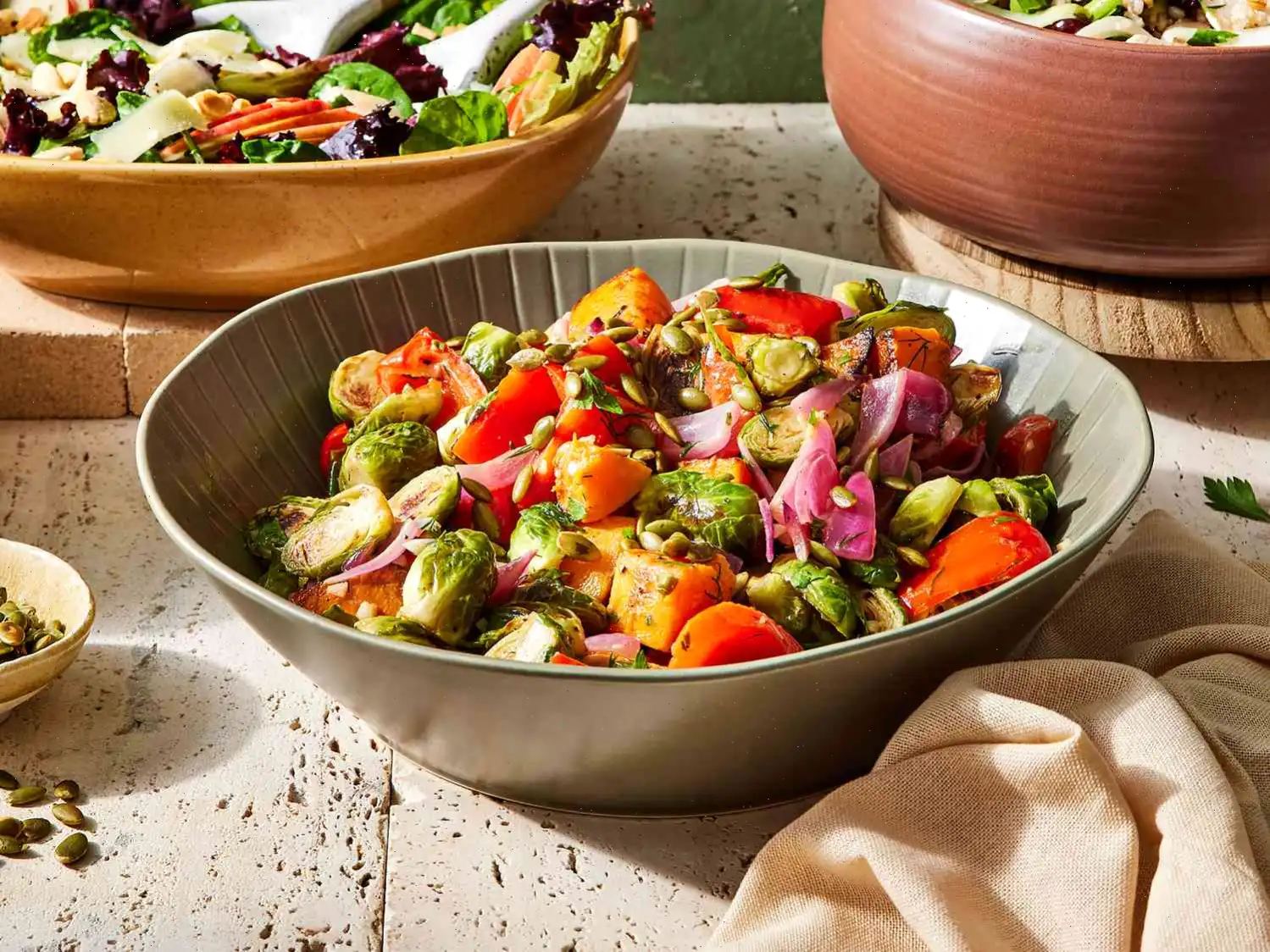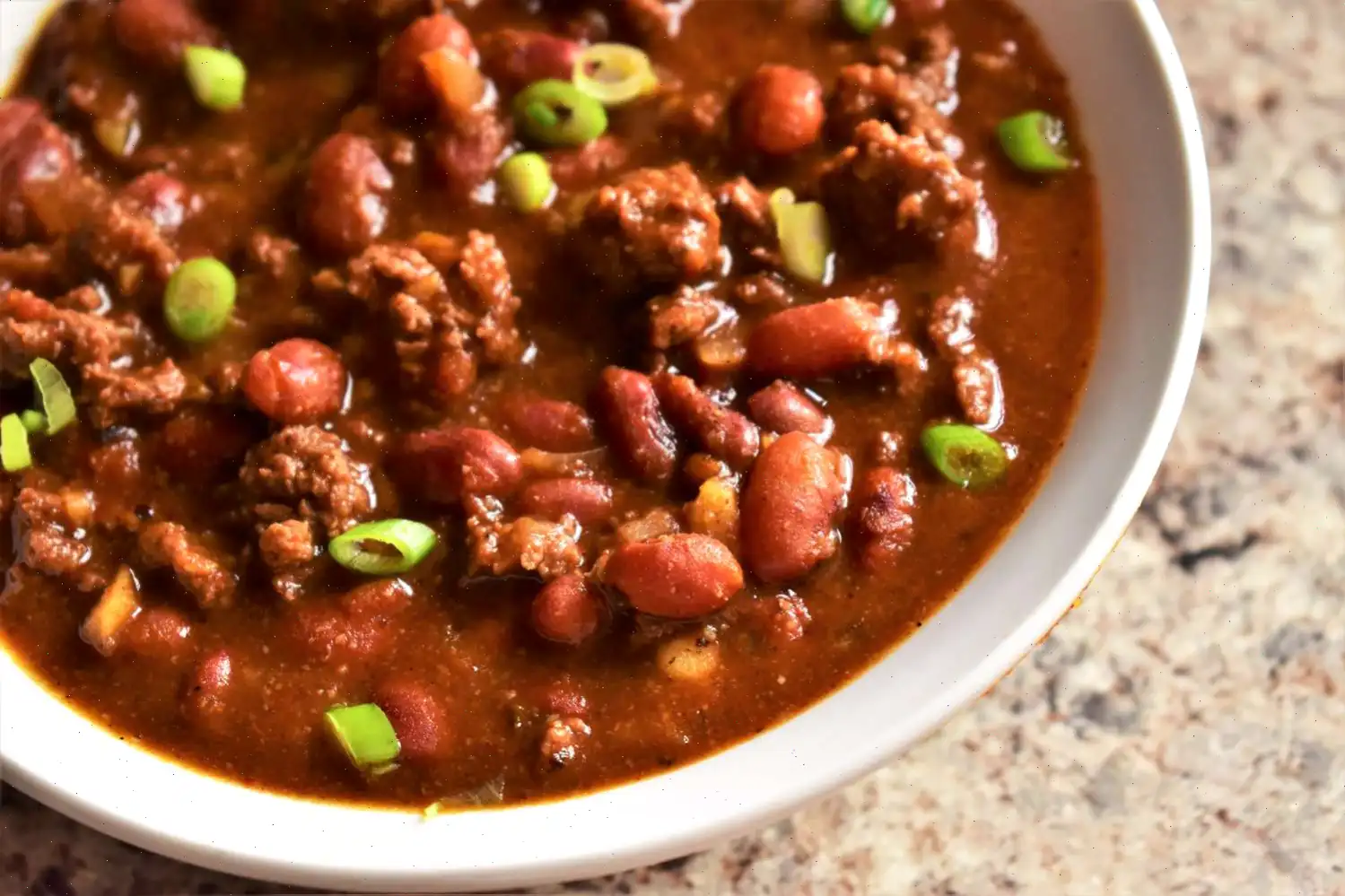
Teriyaki Salmon Bowl Recipe
Ingredients
This recipe was created for a single serving. Quantities are adjustable, but cooking times remain the same. Not all ingredients scale perfectly.
- 1/4 cup low-sodium soy sauce
- 3 tablespoons brown sugar
- 1 small clove garlic, finely chopped
- 1 tablespoon fresh ginger, chopped
- 1 salmon fillet (6 ounces)
- 1/4 cup grated carrots
- 2 radishes, thinly sliced
- 1 cup shredded red cabbage
- 1 cup cooked rice
- 1 teaspoon sesame seeds (optional)
- 1 green onion, thinly sliced (optional)
Directions
- Preheat your oven to 400F (200C) and lightly grease a baking dish with cooking spray.
- In a small bowl, combine the soy sauce, brown sugar, garlic, and ginger to create a fragrant teriyaki sauce.
- Place the salmon fillet in the prepared baking dish, skin side down, and pour the teriyaki sauce over the top.
- Bake in the preheated oven for 12-15 minutes, or until the salmon easily flakes with a fork.
- Spoon the cooked rice into a serving bowl, place the baked salmon on top, and drizzle with the sauce from the pan.
- Add the shredded cabbage, grated carrots, and thinly sliced radishes around the salmon for a colorful presentation.
- Garnish with sliced green onions and sesame seeds, if desired, and serve immediately.
Nutrition Facts (per serving)
- Calories: 780
- Total Fat: 22g (28% DV)
- Saturated Fat: 4g (21% DV)
- Cholesterol: 107mg (36% DV)
- Sodium: 2272mg (99% DV)
- Total Carbohydrates: 96g (35% DV)
- Dietary Fiber: 6g (21% DV)
- Total Sugars: 39g
- Protein: 50g (100% DV)
- Vitamin C: 61mg (68% DV)
- Calcium: 166mg (13% DV)
- Iron: 5mg (26% DV)
- Potassium: 1489mg (32% DV)
*Percent Daily Values are based on a 2,000 calorie diet. Nutrient information may vary depending on ingredients used. Consult a doctor or dietitian for medically restrictive diets.
The Story and Culture Behind the Teriyaki Salmon Bowl
The Teriyaki Salmon Bowl, a modern twist on traditional Japanese cuisine, has roots that stretch back centuries to the culinary practices of Japan. Teriyaki itself comes from the Japanese word teri, which refers to the shine or luster given by sugar or mirin when cooking, and yaki, meaning to grill or broil. Originally, teriyaki techniques were used to enhance the natural flavors of fish, particularly in coastal regions where fresh seafood was abundant. Over time, this method spread across Japan and eventually evolved into the globally recognized teriyaki dishes we know today.
Regional Variations
In Japan, teriyaki is not limited to salmon; it is traditionally applied to tuna, mackerel, and chicken. Regional differences are notable, especially between Eastern and Western Japan. In Eastern Japan, lighter soy sauces are preferred, creating a more delicate glaze, whereas in Western Japan, darker soy sauces produce a richer, deeper flavor. When incorporated into a bowl, modern chefs often combine the fish with rice, fresh vegetables like shredded cabbage and carrots, and garnishes such as sesame seeds or green onions, creating a harmonious balance of textures and colors.
What Makes It Different
Unlike generic salmon dishes, the Teriyaki Salmon Bowl is distinguished by its combination of sweet and savory glaze, quick baking method, and layered presentation. While a grilled salmon or baked salmon may focus solely on the fish, this dish integrates the teriyaki sauce not only as a marinade but also as a finishing drizzle that soaks the rice, elevating the flavor complexity. The addition of fresh vegetables and optional toppings like radishes and sesame seeds adds a refreshing contrast, making it unique among other salmon-based meals.
Where Its Typically Served
Teriyaki Salmon Bowls are commonly found in Japanese restaurants, casual dining spots, and modern fusion eateries worldwide. In Japan, similar bowls are often served as part of lunch sets or bento boxes, while in Western countries, they are popular in health-conscious cafes and fast-casual restaurants that emphasize fresh ingredients and balanced nutrition. The dish is versatile enough to appear both in home kitchens and on menus of gourmet establishments.
Interesting Facts
- Teriyaki sauce was historically made with sake and soy sauce before the addition of sugar or mirin became standard.
- The shiny glaze, which gives teriyaki its signature appearance, is the result of caramelization of sugar during cooking.
- The Teriyaki Salmon Bowl gained international popularity after Japanese cuisine began spreading globally in the 20th century, especially in the United States.
- Using fresh vegetables in the bowl is inspired by the Japanese concept of ichiju-sansai, which emphasizes a balanced meal of one soup and three side dishes alongside rice.
- Though modern bowls may include unconventional ingredients like radishes or shredded carrots, the essence of teriyaki remains rooted in simple, high-quality components.
Today, the Teriyaki Salmon Bowl is celebrated not just as a flavorful meal but as a representation of Japanese culinary philosophyhighlighting balance, umami, and elegance in presentation. Its blend of history, regional influence, and contemporary adaptation makes it a standout choice for anyone seeking both taste and cultural experience in one bowl.
FAQ about Teriyaki Salmon Bowl Recipe
Comments
cruisekid53
12/21/2024 01:43:15 AM
I only had ginger powder but it tasted great!!
Stephen Ramirez
06/26/2024 07:33:49 PM
Made it last night — gone in minutes.








